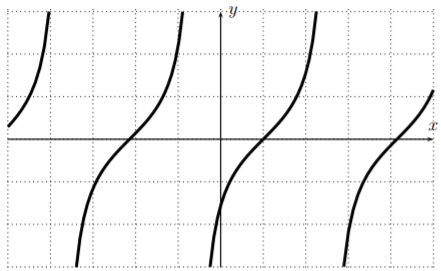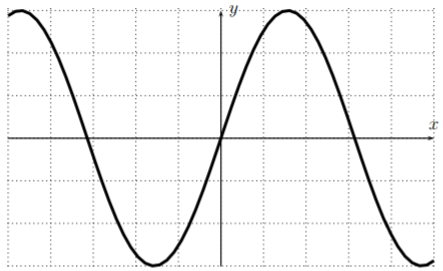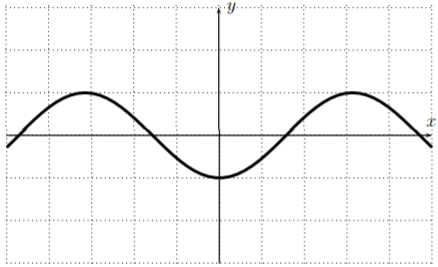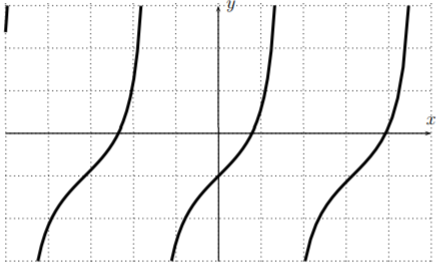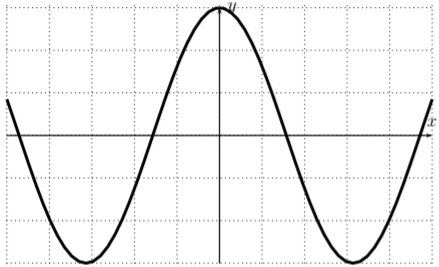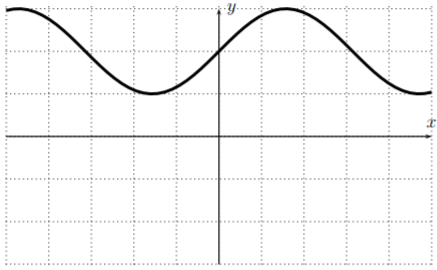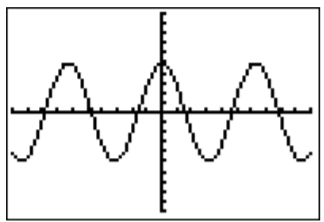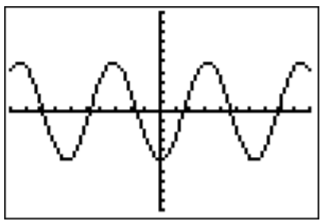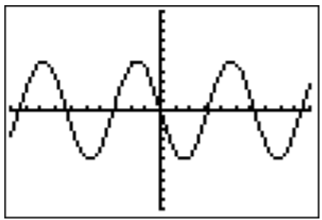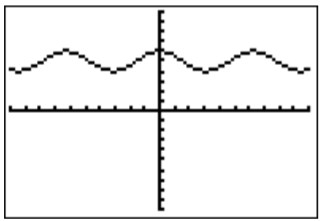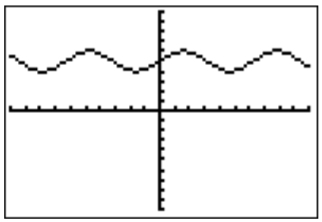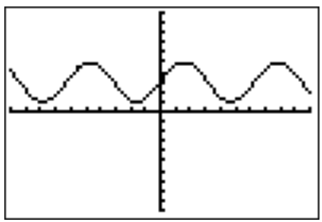17.3: Exercises
- Page ID
- 49061
\( \newcommand{\vecs}[1]{\overset { \scriptstyle \rightharpoonup} {\mathbf{#1}} } \)
\( \newcommand{\vecd}[1]{\overset{-\!-\!\rightharpoonup}{\vphantom{a}\smash {#1}}} \)
\( \newcommand{\dsum}{\displaystyle\sum\limits} \)
\( \newcommand{\dint}{\displaystyle\int\limits} \)
\( \newcommand{\dlim}{\displaystyle\lim\limits} \)
\( \newcommand{\id}{\mathrm{id}}\) \( \newcommand{\Span}{\mathrm{span}}\)
( \newcommand{\kernel}{\mathrm{null}\,}\) \( \newcommand{\range}{\mathrm{range}\,}\)
\( \newcommand{\RealPart}{\mathrm{Re}}\) \( \newcommand{\ImaginaryPart}{\mathrm{Im}}\)
\( \newcommand{\Argument}{\mathrm{Arg}}\) \( \newcommand{\norm}[1]{\| #1 \|}\)
\( \newcommand{\inner}[2]{\langle #1, #2 \rangle}\)
\( \newcommand{\Span}{\mathrm{span}}\)
\( \newcommand{\id}{\mathrm{id}}\)
\( \newcommand{\Span}{\mathrm{span}}\)
\( \newcommand{\kernel}{\mathrm{null}\,}\)
\( \newcommand{\range}{\mathrm{range}\,}\)
\( \newcommand{\RealPart}{\mathrm{Re}}\)
\( \newcommand{\ImaginaryPart}{\mathrm{Im}}\)
\( \newcommand{\Argument}{\mathrm{Arg}}\)
\( \newcommand{\norm}[1]{\| #1 \|}\)
\( \newcommand{\inner}[2]{\langle #1, #2 \rangle}\)
\( \newcommand{\Span}{\mathrm{span}}\) \( \newcommand{\AA}{\unicode[.8,0]{x212B}}\)
\( \newcommand{\vectorA}[1]{\vec{#1}} % arrow\)
\( \newcommand{\vectorAt}[1]{\vec{\text{#1}}} % arrow\)
\( \newcommand{\vectorB}[1]{\overset { \scriptstyle \rightharpoonup} {\mathbf{#1}} } \)
\( \newcommand{\vectorC}[1]{\textbf{#1}} \)
\( \newcommand{\vectorD}[1]{\overrightarrow{#1}} \)
\( \newcommand{\vectorDt}[1]{\overrightarrow{\text{#1}}} \)
\( \newcommand{\vectE}[1]{\overset{-\!-\!\rightharpoonup}{\vphantom{a}\smash{\mathbf {#1}}}} \)
\( \newcommand{\vecs}[1]{\overset { \scriptstyle \rightharpoonup} {\mathbf{#1}} } \)
\( \newcommand{\vecd}[1]{\overset{-\!-\!\rightharpoonup}{\vphantom{a}\smash {#1}}} \)
\(\newcommand{\avec}{\mathbf a}\) \(\newcommand{\bvec}{\mathbf b}\) \(\newcommand{\cvec}{\mathbf c}\) \(\newcommand{\dvec}{\mathbf d}\) \(\newcommand{\dtil}{\widetilde{\mathbf d}}\) \(\newcommand{\evec}{\mathbf e}\) \(\newcommand{\fvec}{\mathbf f}\) \(\newcommand{\nvec}{\mathbf n}\) \(\newcommand{\pvec}{\mathbf p}\) \(\newcommand{\qvec}{\mathbf q}\) \(\newcommand{\svec}{\mathbf s}\) \(\newcommand{\tvec}{\mathbf t}\) \(\newcommand{\uvec}{\mathbf u}\) \(\newcommand{\vvec}{\mathbf v}\) \(\newcommand{\wvec}{\mathbf w}\) \(\newcommand{\xvec}{\mathbf x}\) \(\newcommand{\yvec}{\mathbf y}\) \(\newcommand{\zvec}{\mathbf z}\) \(\newcommand{\rvec}{\mathbf r}\) \(\newcommand{\mvec}{\mathbf m}\) \(\newcommand{\zerovec}{\mathbf 0}\) \(\newcommand{\onevec}{\mathbf 1}\) \(\newcommand{\real}{\mathbb R}\) \(\newcommand{\twovec}[2]{\left[\begin{array}{r}#1 \\ #2 \end{array}\right]}\) \(\newcommand{\ctwovec}[2]{\left[\begin{array}{c}#1 \\ #2 \end{array}\right]}\) \(\newcommand{\threevec}[3]{\left[\begin{array}{r}#1 \\ #2 \\ #3 \end{array}\right]}\) \(\newcommand{\cthreevec}[3]{\left[\begin{array}{c}#1 \\ #2 \\ #3 \end{array}\right]}\) \(\newcommand{\fourvec}[4]{\left[\begin{array}{r}#1 \\ #2 \\ #3 \\ #4 \end{array}\right]}\) \(\newcommand{\cfourvec}[4]{\left[\begin{array}{c}#1 \\ #2 \\ #3 \\ #4 \end{array}\right]}\) \(\newcommand{\fivevec}[5]{\left[\begin{array}{r}#1 \\ #2 \\ #3 \\ #4 \\ #5 \\ \end{array}\right]}\) \(\newcommand{\cfivevec}[5]{\left[\begin{array}{c}#1 \\ #2 \\ #3 \\ #4 \\ #5 \\ \end{array}\right]}\) \(\newcommand{\mattwo}[4]{\left[\begin{array}{rr}#1 \amp #2 \\ #3 \amp #4 \\ \end{array}\right]}\) \(\newcommand{\laspan}[1]{\text{Span}\{#1\}}\) \(\newcommand{\bcal}{\cal B}\) \(\newcommand{\ccal}{\cal C}\) \(\newcommand{\scal}{\cal S}\) \(\newcommand{\wcal}{\cal W}\) \(\newcommand{\ecal}{\cal E}\) \(\newcommand{\coords}[2]{\left\{#1\right\}_{#2}}\) \(\newcommand{\gray}[1]{\color{gray}{#1}}\) \(\newcommand{\lgray}[1]{\color{lightgray}{#1}}\) \(\newcommand{\rank}{\operatorname{rank}}\) \(\newcommand{\row}{\text{Row}}\) \(\newcommand{\col}{\text{Col}}\) \(\renewcommand{\row}{\text{Row}}\) \(\newcommand{\nul}{\text{Nul}}\) \(\newcommand{\var}{\text{Var}}\) \(\newcommand{\corr}{\text{corr}}\) \(\newcommand{\len}[1]{\left|#1\right|}\) \(\newcommand{\bbar}{\overline{\bvec}}\) \(\newcommand{\bhat}{\widehat{\bvec}}\) \(\newcommand{\bperp}{\bvec^\perp}\) \(\newcommand{\xhat}{\widehat{\xvec}}\) \(\newcommand{\vhat}{\widehat{\vvec}}\) \(\newcommand{\uhat}{\widehat{\uvec}}\) \(\newcommand{\what}{\widehat{\wvec}}\) \(\newcommand{\Sighat}{\widehat{\Sigma}}\) \(\newcommand{\lt}{<}\) \(\newcommand{\gt}{>}\) \(\newcommand{\amp}{&}\) \(\definecolor{fillinmathshade}{gray}{0.9}\)Find \(\sin(x)\), \(\cos(x)\), and \(\tan(x)\) for the following angles.
- \(x=120^\circ\)
- \(x=390^\circ\)
- \(x=-150^\circ\)
- \(x=-45^\circ\)
- \(x=1050^\circ\)
- \(x=-810^\circ\)
- \(x=\dfrac{5\pi}{4}\)
- \(x=\dfrac{5\pi}{6}\)
- \(x=\dfrac{10\pi}{3}\)
- \(x=\dfrac{15\pi}{2}\)
- \(x=\dfrac{-\pi}{6}\)
- \(x=\dfrac{-54\pi}{8}\)
- Answer
-
- \(\sin \left(120^{\circ}\right)=\dfrac{\sqrt{3}}{2}, \cos \left(120^{\circ}\right)=-\dfrac{1}{2}, \tan \left(120^{\circ}\right)=-\sqrt{3}\)
- \(\sin \left(390^{\circ}\right)=\dfrac{1}{2}, \cos \left(390^{\circ}\right)=\dfrac{\sqrt{3}}{2}, \tan \left(390^{\circ}\right)=\dfrac{\sqrt{3}}{3}\)
- \(\sin \left(-150^{\circ}\right)=-\dfrac{1}{2}, \cos \left(-150^{\circ}\right)=-\dfrac{\sqrt{3}}{2}, \tan \left(-150^{\circ}\right)=\dfrac{\sqrt{3}}{3}\)
- \(\sin \left(-45^{\circ}\right)=-\dfrac{\sqrt{2}}{2}, \cos \left(-45^{\circ}\right)=\dfrac{\sqrt{2}}{2}, \tan \left(-45^{\circ}\right)=-1\)
- \(\sin \left(1050^{\circ}\right)=-\dfrac{1}{2}, \cos \left(1050^{\circ}\right)=\dfrac{\sqrt{3}}{2}, \tan \left(1050^{\circ}\right)=-\dfrac{\sqrt{3}}{3}\)
- \(\sin \left(-810^{\circ}\right)=-1, \cos \left(-810^{\circ}\right)=0, \tan \left(-810^{\circ}\right)\) is undefined
- \(\sin \left(\dfrac{5 \pi}{4}\right)=-\dfrac{\sqrt{2}}{2}, \cos \left(\dfrac{5 \pi}{4}\right)=-\dfrac{\sqrt{2}}{2}, \tan \left(\dfrac{5 \pi}{4}\right)=1\)
- \(\sin \left(\dfrac{5 \pi}{6}\right)=\dfrac{1}{2}, \cos \left(\dfrac{5 \pi}{6}\right)=-\dfrac{\sqrt{3}}{2}, \tan \left(\dfrac{5 \pi}{6}\right)=-\dfrac{\sqrt{3}}{3}\)
- \(\sin \left(\dfrac{10 \pi}{3}\right)=-\dfrac{\sqrt{3}}{2}, \cos \left(\dfrac{10 \pi}{3}\right)=-\dfrac{1}{2}, \tan \left(\dfrac{10 \pi}{3}\right)=\sqrt{3}\)
- \(\sin \left(\dfrac{15 \pi}{2}\right)=-1, \cos \left(\dfrac{15 \pi}{2}\right)=0, \tan \left(\dfrac{15 \pi}{2}\right)\) is undefined
- \(\sin \left(\dfrac{-\pi}{6}\right)=-\dfrac{1}{2}, \cos \left(\dfrac{-\pi}{6}\right)=\dfrac{\sqrt{3}}{2}, \tan \left(\dfrac{-\pi}{6}\right)=-\dfrac{\sqrt{3}}{3}\)
- \(\sin \left(\dfrac{-54 \pi}{8}\right)=-\dfrac{\sqrt{2}}{2}, \cos \left(\dfrac{-54 \pi}{8}\right)=-\dfrac{\sqrt{2}}{2}, \tan \left(\dfrac{-54 \pi}{8}\right)=1\)
Graph the function, and describe how the graph can be obtained from one of the basic graphs \(y=\sin(x)\), \(y=\cos(x)\), or \(y=\tan(x)\).
- \(f(x)=\sin(x)+2\)
- \(f(x)=\cos(x-\pi)\)
- \(f(x)=\tan(x)-4\)
- \(f(x)=5\cdot \sin(x)\)
- \(f(x)=\cos(2\cdot x)\)
- \(f(x)=\sin(x-2)-5\)
- Answer
-
- shift \(y = \sin(x)\) up by \(2\)
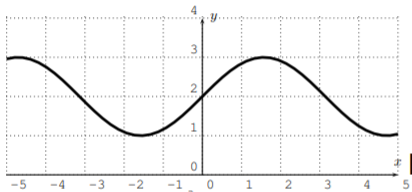
- \(y = \cos(x)\) shifted to the right by \(\pi\)
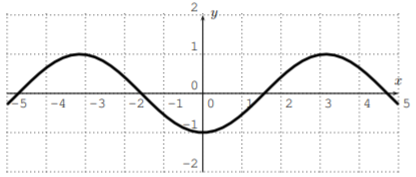
- \(y = \tan(x)\) shifted down by \(4\)
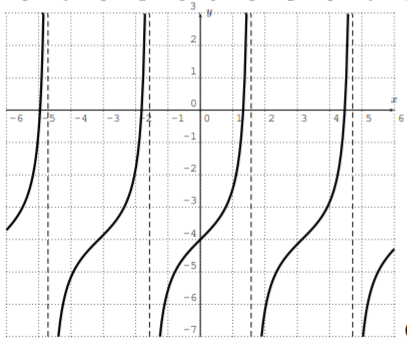
- \(y = \sin(x)\) stretched away from the \(x\)-axis by a factor \(5\)
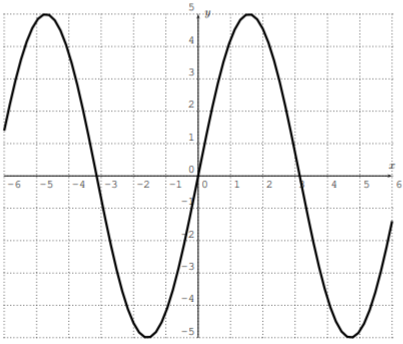
- \(y = \cos(x)\) compressed towards the \(y\)-axis by a factor \(2\)
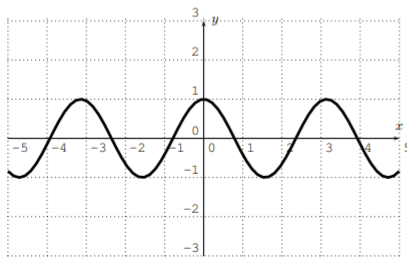
- \(y = \sin(x)\) shifted to the right by \(2\) and down by \(5\)
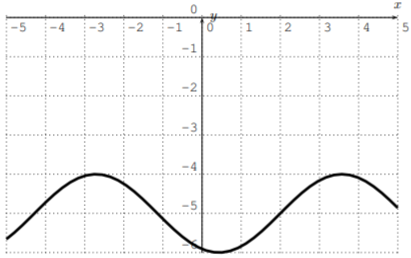
- shift \(y = \sin(x)\) up by \(2\)
Identify the formulas with the graphs. \[\begin{array}{lll}
f(x)=\sin (x)+2, & g(x)=\tan (x-1), & h(x)=3 \sin (x), \\
i(x)=3 \cos (x), & j(x)=\cos (x-\pi), & k(x)=\tan (x)-1
\end{array} \nonumber \]
- Answer
-
- \(g(x)\)
- \(h(x)\)
- \(j(x)\)
- \(k(x)\)
- \(i(x)\)
- \(f(x)\)
Find the formula of a function whose graph is the one displayed below.
- Answer
-
- \(y = 5 \cos(x)\)
- \(y = −5 \cos(x)\)
- \(y = −5 \sin(x)\)
- \(y = \cos(x) + 5\)
- \(y = \sin(x) + 5\)
- \(y = 2 \sin(x) + 3\)
Find the amplitude, period, and phase-shift of the function.
- \(f(x)=5\sin(2x+3)\)
- \(f(x)=\sin(\pi x-5)\)
- \(f(x)=6\sin(4x)\)
- \(f(x)=-2\cos\left(x+\dfrac{\pi}{4}\right)\)
- \(f(x)=8\cos(2x-6)\)
- \(f(x)=3\sin\left(\dfrac{x}{4}\right)\)
- \(f(x)=-\cos(x+2)\)
- \(f(x)=7\sin \left(\dfrac{2\pi}{5}x-\dfrac{6\pi}{5}\right)\)
- \(f(x)=\cos(-2x)\)
- Answer
-
- amplitude \(5\), period \(\pi\), phase-shift \(\dfrac{−3}{2}\)
- amplitude \(1\), period \(2\), phase-shift \(\dfrac 5 \pi\)
- amplitude \(6\), period \(\dfrac \pi 2\), phase-shift \(0\)
- amplitude \(2\), period \(\dfrac 2 \pi\), phase-shift \(\dfrac{−\pi}{4}\)
- amplitude \(8\), period \(\pi\), phase-shift \(3\)
- amplitude \(3\), period \(\dfrac 8 \pi\), phase-shift \(0\)
- amplitude \(1\), period \(\dfrac 2 \pi\), phase-shift \(−2\)
- amplitude \(7\), period \(5\), phase-shift \(3\)
- amplitude \(1\), period \(\pi\), phase-shift \(0\)
Find the amplitude, period, and phase-shift of the function. Use this information to graph the function over a full period. Label all maxima, minima, and zeros of the function.
- \(y=5\cos(2x)\)
- \(y=4\sin(\pi x)\)
- \(y=2\sin\left(\dfrac{2\pi}{3}x\right)\)
- \(y=\cos(2x-\pi)\)
- \(y=\cos(\pi x-\pi)\)
- \(y=-6\cos(-\dfrac{x}{4})\)
- \(y=-\cos(4x+\pi)\)
- \(y=7\sin\left(x+\dfrac{\pi}{4}\right)\)
- \(y=5\cos\left(x+\dfrac{3\pi}{2}\right)\)
- \(y=4\sin(5x-\pi)\)
- \(y=-3\cos(2\pi x-4)\)
- \(y=7\sin\left(\dfrac 1 4 x+\dfrac{\pi}{4}\right)\)
- \(y=\cos(3x-4\pi)\)
- \(y=2\sin\big(\dfrac 1 5 x-\dfrac{\pi}{10}\big)\)
- \(y=\dfrac 1 3 \cos\left(\dfrac{14}{5}x-\dfrac{6\pi}{5}\right)\)
- Answer
-
- amplitude \(5\), period \(\pi\), phase-shift \(0\)
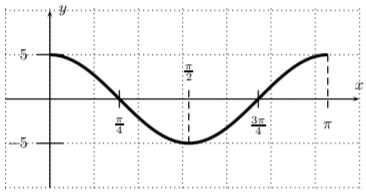
- amplitude \(4\), period \(2\), phase-shift \(0\)
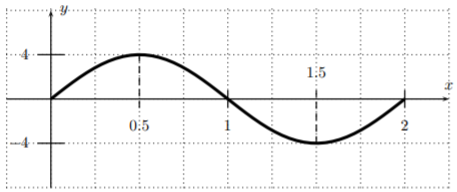
- amplitude \(2\), period \(3\), phase-shift \(0\)
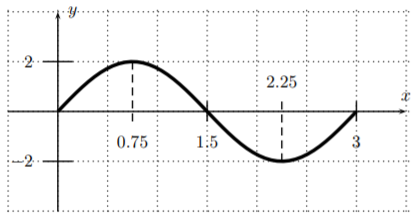
- amplitude \(1\), period \(\pi\), phase-shift \(\dfrac \pi 2\)
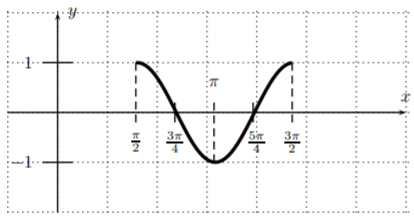
- amplitude \(1\), period \(2\), phase-shift \(1\)
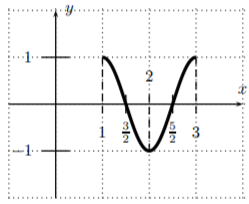
- amplitude \(6\), period \(\dfrac 8 \pi \), phase-shift \(0\)
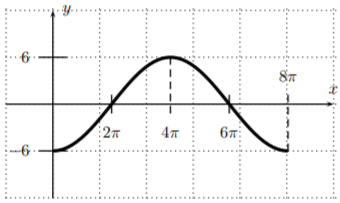
- amplitude \(1\), period \(\dfrac \pi 2\), phase-shift \(\dfrac {−\pi}{4}\)
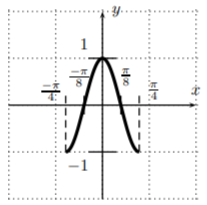
- amplitude \(7\), period \(\dfrac 2 \pi\), phase-shift \(\dfrac {−\pi}{4}\)
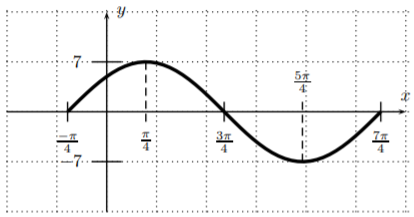
- amplitude \(5\), period \(\dfrac 2 \pi\), phase-shift \(\dfrac {−3\pi}{2}\)
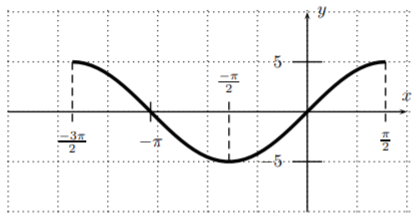
- amplitude \(4\), period \(\dfrac {2\pi}{5}\), phase-shift \(\dfrac \pi 5\)

- amplitude \(3\), period \(1\), phase-shift \(\dfrac 2 \pi\)

- amplitude \(7\), period \(\dfrac 8 \pi\), phase-shift \(-\pi\)
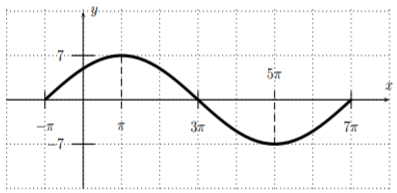
- amplitude \(1\), period \(\dfrac {2\pi}{3}\), phase-shift \(\dfrac {4\pi}{3}\)
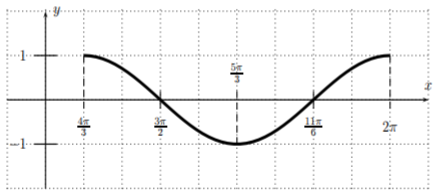
- amplitude \(2\), period \(\dfrac 10 \pi\), phase-shift \(\dfrac \pi 2\)
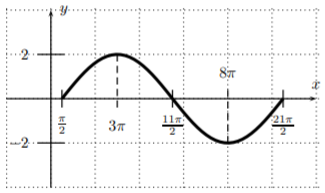
- amplitude \(\dfrac 1 3\), period \(\dfrac {5\pi}{7}\), phase-shift \(\dfrac {3\pi}{7}\)
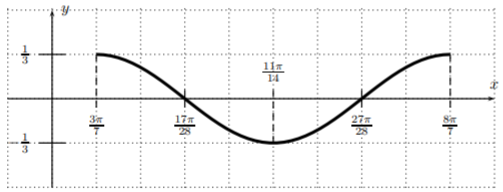
- amplitude \(5\), period \(\pi\), phase-shift \(0\)



